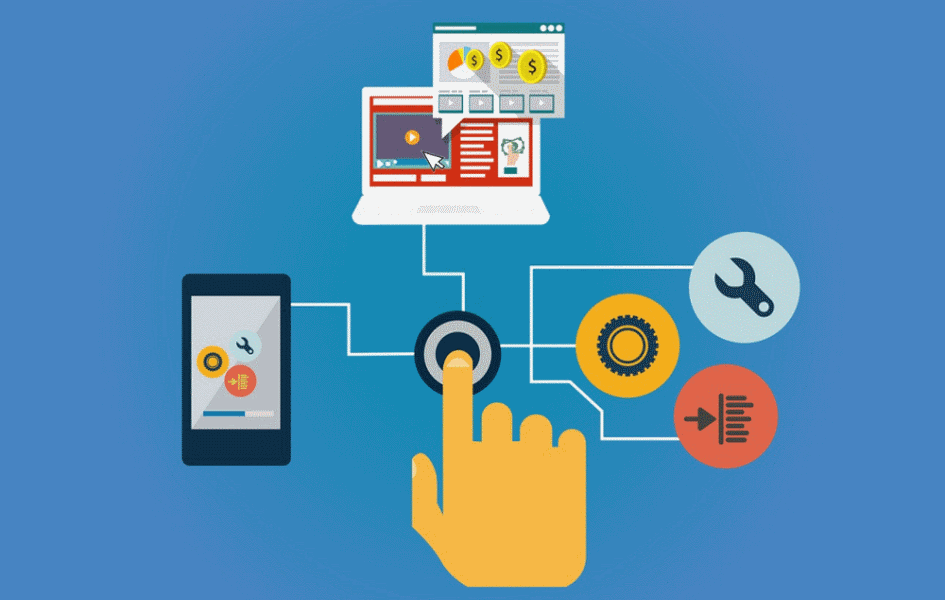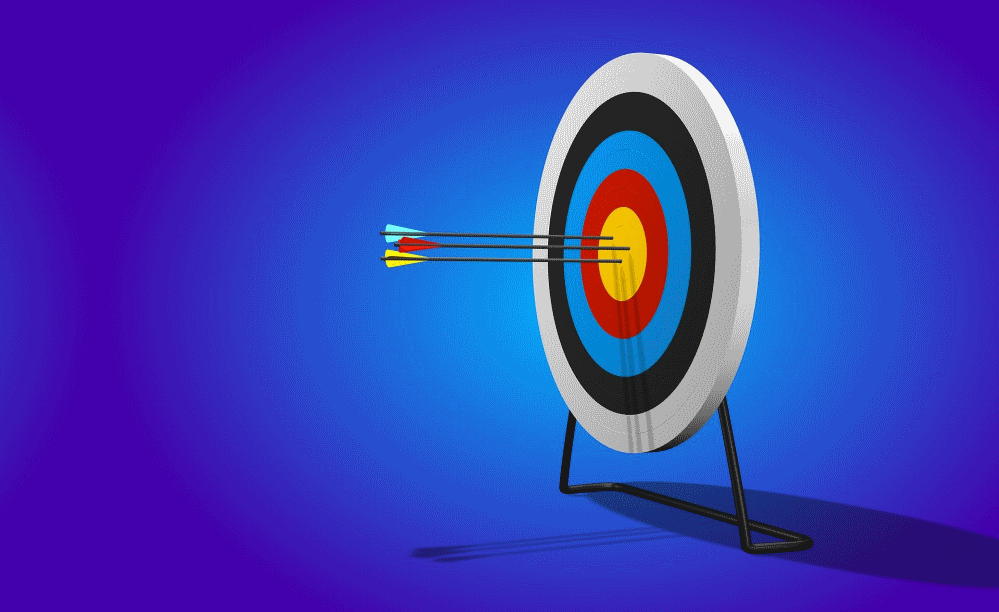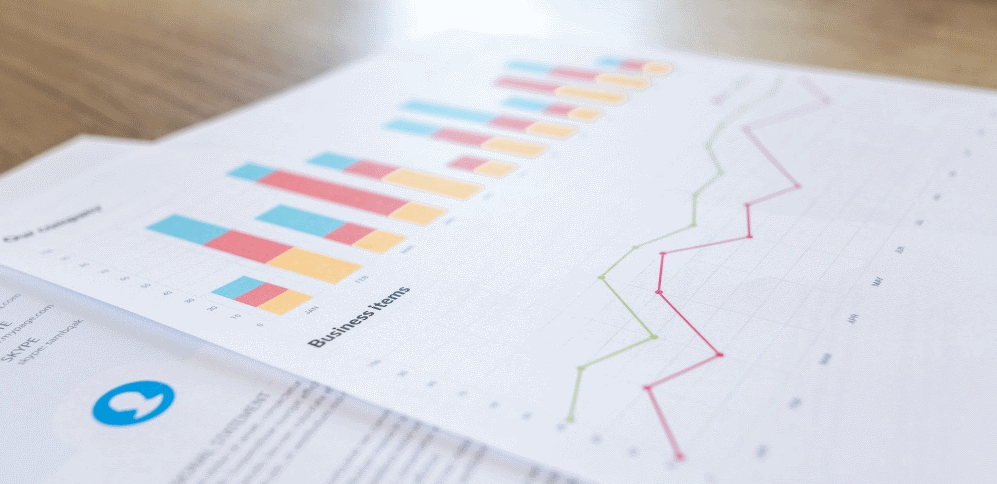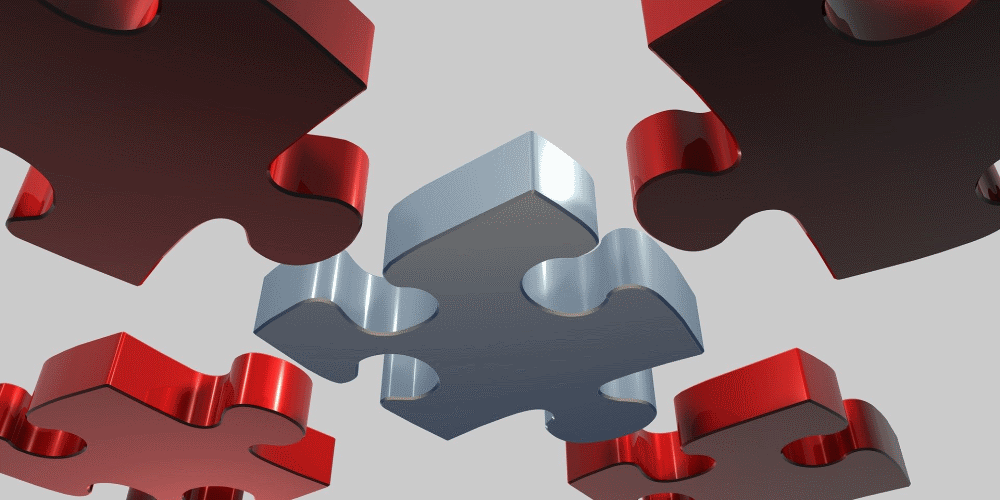
- Thomas Eigner
- 08.04.2020
- Digitalisierung
The term e-commerce is increasingly becoming a topic for retailers and service providers. All the trends show that more and more companies are conducting their business online, either partially or even completely. While online retail was initially dismissed as a short-lived trend, most retailers today can no longer imagine doing business without it. Do you want to get started with an online store? There are a few things to consider beforehand to ensure that nothing stands in the way of a successful venture.
In this article, we provide you with the most important information about e-commerce. PS: It has become very extensive. If you are looking for specific information, you can jump to the desired topic using the table of contents. Enjoy reading! 😉
Table of contents
- What is e-commerce?
- The history of e-commerce
- E-commerce and e-business: what is the difference?
- What are the objectives of e-commerce?
- What types of e-commerce are there?
- What are the objectives of e-commerce?
- E-commerce statistics: the numbers speak for themselves
- E-commerce strategy and development: the measures that matter
- These solutions and systems are available in the e-commerce sector
- Marketing in e-commerce: the fuel for your shop
- E-commerce agency and consultancy – help, I need support
- What are the current trends in e-commerce?
- What does an online shop cost?
- Are there any subsidies in the field of e-commerce?
- E-commerce knowledge: how to stay on the ball
What does e-commerce mean?

The term e-commerce means "electronic processing of business transactions that are mapped within a network”. This not only refers to the sale of products via an online shop, but also to customer services or online banking. Any kind of business transaction between a supplier and a prospective customer that uses electronic communication technology is included.
If we look at the market as a whole, we can see that a large proportion of business processes take place in the B2B and B2C sectors.
Once upon a time... | The history of e-commerce

Well, it wasn’t that long ago. The first major developments that made online shopping possible began in the 1960s. The foundation for this was laid by the expansion and innovative interaction in the fields of technology and telecommunications. The first online purchases by private individuals were made in 1984 due to the introduction of computers in the business sector and the orientation of electronic online communication systems towards private customers.
From the 2000s, e-commerce experienced an upswing and was first used in the banking industry and by shop operators. At the same time, internet giants such as Google, Apple and Amazon experienced an upswing and enjoyed increasing popularity due to their services.
Source: emagnetix
E-commerce and e-business: what's the difference?

It is important to note that e-commerce is only one Tpart of e-business. In addition to e-commerce, there is also the procurement part, which is covered by e-procurement.
While e-commerce only maps all transaction processes, e-business encompasses all information exchange of a business process. In general, the objective is to focus on the development of efficient business processes, which should save costs and increase sales.

What are the goals of e-commerce?

E-commerce pursues the same goal as any digitalization measure. It is about increasing efficiency and scalability, which should reduce costs and maximize sales. This of course also requires standardization of sales processes. We will explain the exact advantages of using e-commerce in the following.
What types of e-commerce are there?

To better understand the topic of e-commerce, it is important to at least be familiar with the areas in which it is used. To this end, we distinguish between business partners and various business characteristics.
Breakdown by business relationships
Business to Consumer - B2C
The focus here is on providing customers with a pleasant sales experience. The motto is: the simpler, the better.
Business to Business - B2B
In the B2B sector, the sales process is designed for the companies to be addressed. The aim is to make the purchasing process as easy as possible for companies. This can be done, for example, by using an interface connection. This enables customers to map information such as stock levels or delivery times in their own ERP system, thus ensuring efficient purchasing processes.
Administration to Consumer - A2C
Various onlines ervices that can be used to conveniently complete tax returns on the web, for example.
Administration to Administration - A2A
This includes digital transactions such as online banking.
Business to Employee - B2E
A classic example of this are travel expense reports.
Breakdown by business characteristics
Multichannel e-commerce
As the name suggests, this approach relies not on a single channel but on several. The aim is to maximize the performance of each channel used. What does that mean exactly? Each channel is set up and equipped differently. However, in addition to the performance increase of the individual channels, there are also disadvantages. Since each channel is set up differently, synergy effects between the channelsare inevitably lost.
Example:
A shoe shop has a stationary store and wants to expand its market and also benefit from the advantages offered by an e-commerce solution. For example, products can be compared online. With free pickup in the store or special offers, customers can be encouraged to visit the store, which strengthens customer loyalty and generates more sales.
This model has now proven to be the most economically effective.
But it also includes offering products on several marketplaces such as Amazon and eBay. With the right system solution, products can be managed on all channels with just a few clicks of the mouse. This saves a lot of time and also expands your market, which leads to increased sales with more or less the same effort.
Omnichannel e-commerce
In contrast to multichannel, where each channel has its own processes, omnichannel marketing focuses on offering customers a comprehensive, consistent experience that takes place on multiple channels at the same time. This means that no matter which platform the customer is currently using, they should be able to start the purchase process at any time.
Example:
The customer intends to buy shoes in a store, but initially only wants advice. Once they get home, they want to Learn more online and compare prices. If the customer decides to buy the shoes in the store where he received the advice, he can also buy the shoes in the store's online shop. This saves the customer from having to go back to the store.
The omnichannel model is all about customer satisfaction, because only a satisfied customer is a loyal customer.
What are the advantages and disadvantages of e-commerce?

E-commerce offers many advantages, both for the operator and for the consumer. But where there is light, there is also shadow.
Advantages for the provider
- No disadvantage through location
- No rental costs
- Staff savings
- Simple and quick content updates
- Overcoming of natural boundaries
- Additional sales channel
- Available around the clock
- Better customer communication through the use of social media and blog posts
- High reach is possible through the use of online marketing
Advantages for the buyer
- Purchasing without time delay. Customers do not have to drive to a store first.
- Prices can be compared in real time
- Customers can order from the comfort of their sofa
- Additional information channel
- Shopping 24/7
Disadvantages for the provider
- Complex implementation
- Sometimes expensive support for marketing measures from a specialist
- Increased competition
- Increased price pressure due to comparison tools
- Anonymous first-time customers
Disadvantages for the buyer
- No personal advice
- Possible data leaks from shop operators
- Store closures
- Products cannot be tried out unless there is the option of free return shipping
E-commerce statistics: the figures speak for themselves

- Average order value in e-commerce: 77.71$ worldwide. Source: statista.com
- The world's strongest-selling market segment: fashion. Source: statista.com
- Worldwide e-commerce users: 3.6 billion and will grow to 4.68 billion by 2023 according to the Digital Market Outlook. That's a 30% increase in just 5 years. Source: statista.com
- Proportion of online purchases in the B2B sector in Germany in 2018: 56%. Source: statista.com
E-commerce strategy and development: what measures are important

When developing a strategy, it is important to find out what market exists for your products.So-called web analysis tools such as Google Analytics or the analysis tool in Facebook, which can collect and simultaneously measure data on a wide range of channels, are helpful for this.
Relevant data points are:
- Target group (age, gender, interests, origin, language)
- Product prices and offers from competitors
- User behavior
Longer analysis periods enable you to learn more about your customers. This means that the business model can be designed in a more targeted manner. In addition, there is also the option of automated research. In this case, a search agent is configured to track the required data and changes and to make them available to you either on a platform or by email.
These solutions and systems are available in the e-commerce sector

If you know your target group, you need to be clear about the scale of your business. Depending on this, you should decide whether to use existing website builders or invest in a customized shop. However, you should be aware that the possibilities with a website builder are limited. . If your online shop is accessed more frequently, you may also have to consider whether the performance, i.e. the speed of the system, is still acceptable. If the requirements for a website builder are no longer sufficient, you will not be able to avoid a professional solution in the long term. There is a perfect solution for every application. There is no right or wronganswer to this question!
Advantages of modular systems
- Cost-effective
- Quick to set up
Disadvantages of modular systems
- Limited options
- Not as flexible as a customized shop
- Fewer functions
- Use of plugins necessary
- Poorer performance in terms of speed
- Dependent on third parties
- More complex maintenance when using many plugins
Advantages of customized shop solutions
- Flexible
- Fast
- Few or no plugins required
- Can be developed further without limit
- Independent of third parties
- Easy maintenance
Disadvantages of customized shop solutions
- Cost-intensive
- Costly implementation
If you decide to use a professional system, you will need to find an agency to develop your shop. Try to find out in advance whether the agency is really competent. Online reviews, certificates, references and, in the end, the impression you get from the initial meeting are all good indicators.
HIf you also have a brick-and-mortar store, that is by no means a disadvantage. Nowadays, customers want to switch between online and offline shopping experiences much more often. Omnichannel marketing is designed to meet these needs. If you do not have a brick-and-mortar store, but still want to benefit from its advantages, a showroom can also be designed. This allows customers to experience the products live. The use of virtual reality is becoming increasingly common in this context. Depending on the product and target group, there are many innovative ways to use omnichannel marketing.
Marketing in e-commerce: the fuel for your shop

Unfortunately, an online shop alone is no guarantee for selling many products uand achieving the desired success. The entire sales process is more like a clockwork in which one cog must mesh with another to function. This means that marketing systems must be linked to the shop in order to attract the desired buyers.
Below you will find some marketing measures that may be suitable for your business. Which measures are best for you depends mainly on your products and your target group. Often, it is initially unclear what the target group looks like. Using split tests (different campaigns at low cost), you can check the effectiveness of the selected marketing channels and compare them with each other with a relatively small budget. This makes it possible to define the target group more precisely and to find the right channels for you. Only then does it make sense to spend more money and to use your marketing expenses efficiently.
Online PR
- Social Media Marketing
- Influencer Relations
- Media work
Search engine optimization (SEO) / search engine marketing (SEM)
- Google, Bing
- Youtube
- Amazon
- App stores
Email marketing
- Newsletter
- Event-based trigger mails
- Reactivation emails
Content Marketing
- Content Promotion
- Native Advertising
- Content Outreach
- SEO
- Content Seeding
Funnel Marketing
- Sales Funnel
- Marketing Funnel
- Conversion Funnel
- Lead Funnel
Affiliate Marketing
- Pay-per-Click / Cost-per-Click
- Pay-per-Lead (PPL)
- Pay-per-View (CPV) and the cost per thousand (CPT)
- Pay-per-Sale (PPS)
- Pay per Install
- Pay per Click Out
- Pay per Link
- Pay per Print out
- Pay per SignUp
- Lifetime commission
E-commerce agency and consultancy – help, I need support

When you first start looking into this topic, you are confronted with a multitude of questions. In addition, there are many forks in the road that can lead in the wrong direction. Therefore, it makes sense to seek professional advice for your online project. The Chamber of Commerce maintains a list of experts that shows specialized business consultants in this field. If you are interested in the design and implementation of an individual web shop please feel free to contact us.
What are the current trends in e-commerce?

Responsive design
More and more products are being purchased via mobile devices. That's why it's even more important that your shop is responsive.
Augmented und Virtual Reality
As already described under the point Marketing, there are projects in which augmented and virtual reality are used. The aim is to present the product to the customer as well as possible.
Voice commerce
Almost 50% of search queries are now made directly using technologies such as Alexa or Google Assistant. It is now also possible to use these programs for your online shop. Online shops can be expanded to include a voice assistant and thus benefit from this technology.
Machine Learning - Artificial intelligence
In the future, advertising will be even more personalized. This trend will also have to be applied to systems. Dynamic websites and online shops can help here. Based on existing data, the content displayed in the online shop is personalized to the user's needs. This improves the shopping experience for the customer and also increases the likelihood of a purchase.
Chatbots
These bots are finding more and more areas of application. While we have been familiar with this integration from Facebook Messenger for some time, they are now being used in a variety of ways. In online shops, bots provide services for service requests and product applications.
How much does an online shop cost?

If you decide on a modular solution, the costs start at 5,000€. Prices below that are almost certainly not legitimate. If the shop is to include functions customized to your wishes, the costs for an individual solution are at least 15,000€. Depending on the requirements of the system, there is no upper limit. For corporations, the costs can be several million euros.
Are there any subsidies in e-commerce?

The state is naturally also interested in strengthening the economy. With subsidies, it also wants to avoid established shop operators being forced out of business sooner or later. In the wake of the digitalization wave, the Chamber of Commerce has put together interesting subsidy packages in the field of e-business.
The subsidies are for consulting services and IT investments.
A list of subsidies relevant to the topic for Austria can be found on the WKO website.
For subsidies in Germany, you can find information on the website of the Federal Ministry for Economic Affairs and Energy and in the funding database of the respective federal states.
E-commerce knowledge

In these fast-moving times, nothing stays the same. In the e-commerce sector especially, there are constantly new developments and trends to which you should adapt your business models.